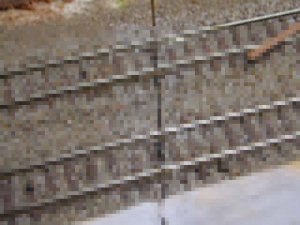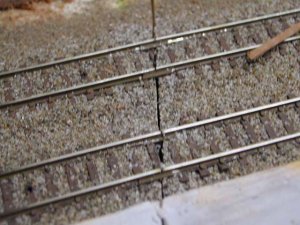well this will be the plan.
But first my have my Computer upgraded. An just by the end of the month I'll think on starting building this.
I'm almost finishing my computer techinician course, and 17th, 18th, 23rd, 24th, and the 25th of June will be days of many work at school.
This plan, as almost every plans, will be changed according to my needs.
Well, with this plan, I need to know how to build a good light weight structure (still thinking about balsa) and subroad bed materials.
Also need to know what hardware should I use to connect my modules.
And what is the correct way to paint rolling stock. Brush? Air brush? or Spray can? Want to paint the locos I have in red, since almost every european locos i like and want to have in my collection are red.
So i'll be paint one LL GP38 (BN), and one LL SD9(B&O). The only I won't paint will be my SF E7 (I love SF livery). SO how can I paint them in the correct way?
Been choosing some installations from vollmer, pola, faller and so on.
Many of you will be wondering how will this be possible to join european style with maerican stile? My answer is: Who cares? It's up to you to make your imaginary world. So that's what I'll do. American diesel locos for freight, and electric european loco sfor some freight, but most for passengers. I think it's a way to bring these two scenes together. Just hope that the look good here. If they don't... Oh well.
But first my have my Computer upgraded. An just by the end of the month I'll think on starting building this.
I'm almost finishing my computer techinician course, and 17th, 18th, 23rd, 24th, and the 25th of June will be days of many work at school.
This plan, as almost every plans, will be changed according to my needs.
Well, with this plan, I need to know how to build a good light weight structure (still thinking about balsa) and subroad bed materials.
Also need to know what hardware should I use to connect my modules.
And what is the correct way to paint rolling stock. Brush? Air brush? or Spray can? Want to paint the locos I have in red, since almost every european locos i like and want to have in my collection are red.
So i'll be paint one LL GP38 (BN), and one LL SD9(B&O). The only I won't paint will be my SF E7 (I love SF livery). SO how can I paint them in the correct way?
Been choosing some installations from vollmer, pola, faller and so on.
Many of you will be wondering how will this be possible to join european style with maerican stile? My answer is: Who cares? It's up to you to make your imaginary world. So that's what I'll do. American diesel locos for freight, and electric european loco sfor some freight, but most for passengers. I think it's a way to bring these two scenes together. Just hope that the look good here. If they don't... Oh well.



